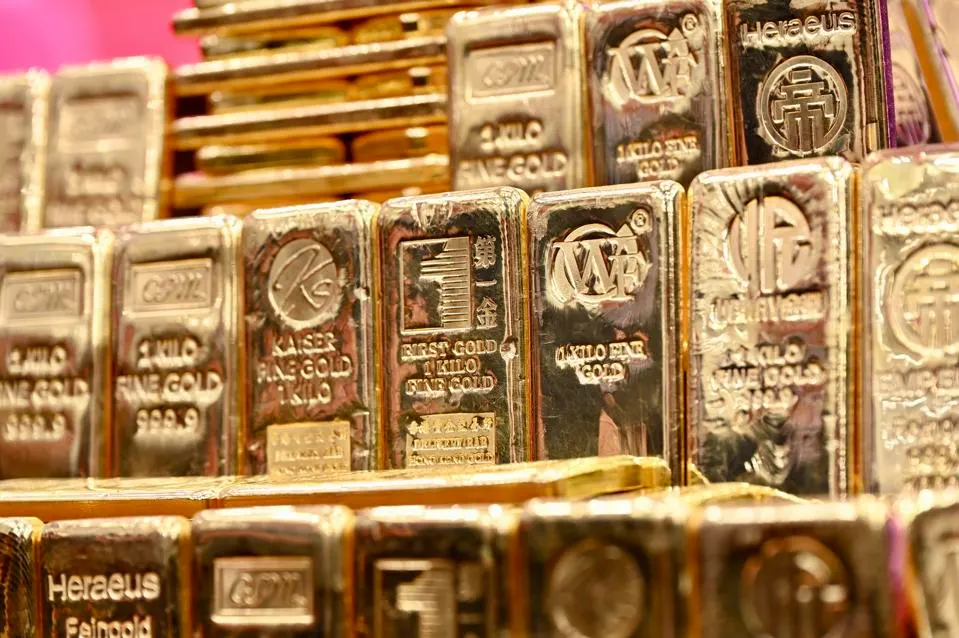Gold has long been regarded as a safe-haven asset, particularly during times of economic uncertainty. As central banks print more money, inflation rises, and stock markets experience significant volatility, many investors flock to gold to protect their wealth. But what does historical data tell us about gold’s performance during economic recessions? By analyzing past recessions and understanding how gold behaves in these times, we can draw key insights that may inform investment strategies in future downturns.
Analyzing Gold Price Movements During Past Recessions
To understand how gold performs during recessions, we must first look at its price movements during some of the most significant economic slowdowns of the last century. Historically, gold tends to perform well during times of crisis, though the extent of its price movements varies depending on the nature and severity of the recession.
- The 1970s: A Decade of Stagflation The 1970s were characterized by a unique economic environment known as stagflation—high inflation coupled with high unemployment. During this period, gold prices soared as inflation eroded the purchasing power of fiat currencies. Gold’s price increased from around $35 per ounce in 1970 to over $800 per ounce by the end of the decade. Investors viewed gold as a hedge against rising prices, and its value surged as the U.S. faced a combination of economic slowdowns and geopolitical tensions, such as the oil crisis.
- The 2008 Global Financial Crisis The global financial crisis of 2008 triggered a massive recession that saw stock markets crash, banks fail, and global trade come to a near standstill. During this time, gold prices initially dropped as investors liquidated assets to cover margin calls. However, once the crisis deepened, gold prices quickly rebounded. By the time the crisis had passed, gold had surged from around $700 per ounce in 2008 to over $1,900 per ounce by 2011. The reason for this price increase was multifaceted—gold became an attractive investment as the U.S. dollar weakened and the Federal Reserve implemented aggressive monetary policies, such as quantitative easing.
- The COVID-19 Pandemic and 2020 Recession In early 2020, the COVID-19 pandemic triggered a global economic downturn, with stock markets experiencing their sharpest declines in history. Gold, as in previous crises, acted as a safe-haven asset. During the initial shock, gold prices fell in tandem with the broader market as investors rushed to cash. However, as governments and central banks worldwide rolled out massive fiscal stimulus packages and began flooding the market with liquidity, gold prices rebounded sharply. By August 2020, gold hit a new all-time high of $2,067 per ounce. Investors turned to gold as a hedge against inflation and currency devaluation caused by the flood of stimulus money.
How Gold Behaves During Economic Slowdowns and Financial Crises
Gold’s behavior during economic slowdowns and financial crises is often tied to a few key factors:
- Inflation Hedge: One of the primary reasons gold performs well during recessions is its role as a hedge against inflation. As economic activity slows and governments engage in monetary stimulus, inflation can rise, eroding the purchasing power of paper currencies. In such times, gold is seen as a store of value that retains its purchasing power.
- Flight to Safety: During financial crises, investors flock to safe-haven assets, and gold is widely considered one of the safest. In contrast to stocks, bonds, and real estate, gold is not tied to any specific economy or political system, making it attractive when the financial system is under stress. It is viewed as a non-correlated asset that can perform well when other asset classes falter.
- Currency Devaluation: Gold prices are also highly influenced by changes in the value of major currencies, particularly the U.S. dollar. When the dollar weakens, gold prices tend to rise, as it becomes cheaper for foreign investors to buy gold. This dynamic is especially prominent during recessions when central banks engage in quantitative easing or lower interest rates to stimulate economic activity.
- Increased Demand for Physical Gold: During periods of recession, physical gold demand tends to increase, especially from central banks and institutional investors. As these entities seek to diversify their portfolios and safeguard wealth, they often turn to gold. The demand for gold bars, coins, and other physical assets also rises among individual investors who want to hedge against the uncertain economic environment.

Market Trends in Times of Economic Instability
In addition to its role as a safe-haven asset, gold’s performance during times of economic instability is influenced by a variety of market trends:
- Interest Rates and Monetary Policy: The central banks’ response to economic downturns has a direct impact on gold prices. Low or negative interest rates, which are often used to stimulate the economy during recessions, reduce the opportunity cost of holding gold. When rates are low, gold becomes more attractive compared to interest-bearing assets, such as bonds. Additionally, central bank policies that lead to the devaluation of the currency can drive up demand for gold as a store of value.
- Investor Behavior: In times of economic uncertainty, investors tend to shift their portfolios toward assets that offer stability and security. This has historically driven an increase in demand for gold. Additionally, gold ETFs (Exchange Traded Funds) have become a popular investment vehicle for those seeking exposure to gold without having to physically own the metal. The increase in gold-backed ETFs during times of economic instability reflects the growing trend of using gold as a form of financial insurance.
- Geopolitical Tensions: Global conflicts and political instability are also major drivers of gold demand. Gold is often seen as a safe haven not only during domestic economic crises but also in times of geopolitical unrest. For example, during periods of war, economic sanctions, or political instability in major economies, investors tend to buy gold as a hedge against geopolitical risks.
Using Historical Data to Predict Gold’s Behavior in Future Downturns
By studying gold’s performance during past recessions, we can gain insights into how the metal might behave in future economic downturns. Historical data suggests that gold will continue to perform well during periods of heightened economic and geopolitical uncertainty, provided that certain conditions hold true:
- Inflationary Pressures: If the global economy experiences significant inflationary pressures during a recession, gold is likely to benefit, as it has historically performed well in inflationary environments.
- Central Bank Policies: As long as central banks continue to employ monetary easing policies, such as low interest rates and quantitative easing, gold is likely to remain a strong investment. These policies typically result in currency devaluation, which boosts demand for gold as a store of value.
- Geopolitical Risks: In times of geopolitical uncertainty, whether it’s due to trade wars, military conflicts, or political upheaval, gold’s appeal as a safe-haven asset will likely increase. The more uncertain the global political climate, the stronger the case for owning gold.
- Diversification: Investors looking to hedge against risk should continue to view gold as a key component of their portfolio. In times of recession, gold can provide diversification benefits that protect wealth during periods of stock market volatility.
Conclusion
Gold’s historical performance during recessions shows that it remains one of the most reliable assets during times of economic turmoil. Whether it’s due to inflation, currency devaluation, financial crises, or geopolitical instability, gold has proven time and again to be a safe-haven asset that can protect wealth when the financial system is under stress.
As we look ahead to future recessions, understanding gold’s behavior during past downturns can provide valuable insights for investors seeking to navigate uncertain economic conditions. With inflationary pressures, loose monetary policies, and geopolitical risks on the rise, gold is poised to continue playing a critical role in protecting wealth and preserving purchasing power during times of crisis.
































